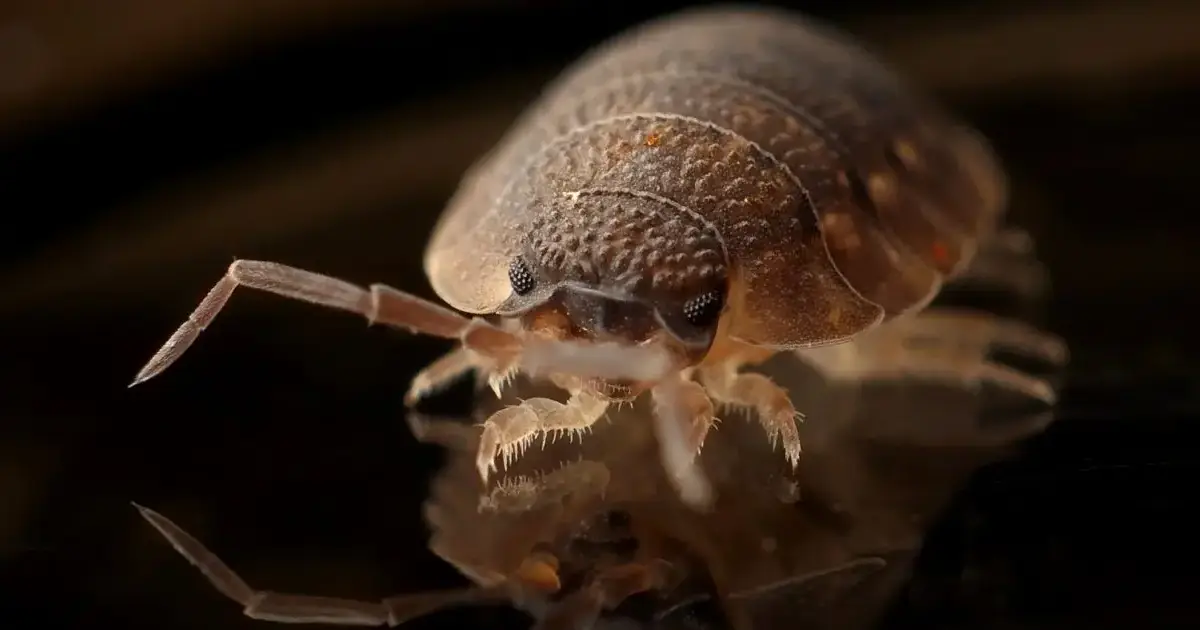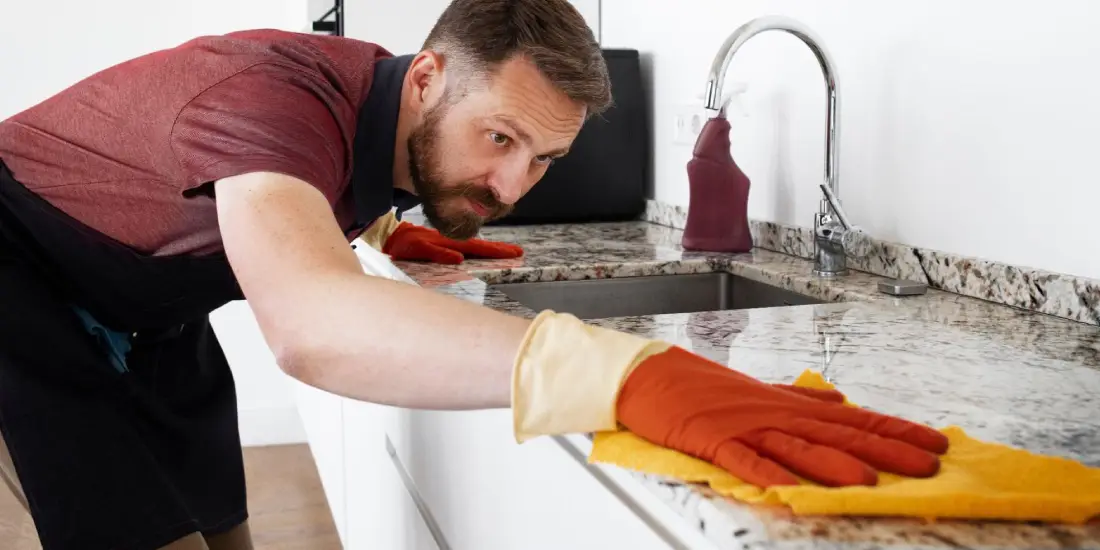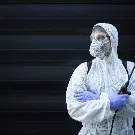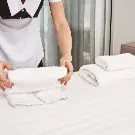
What Are Bed Bugs ?
Bed bugs, scientifically known as Cimex lectularius, are tiny parasitic insects that have plagued humans for centuries. They feed exclusively on blood, usually human blood, and they can live for up to a year without food. Bed bugs are well-known for reproducing quickly. A female bed bug can produce up to five eggs per day and up to 200–500 eggs throughout her lifetime. Plus, they can survive for several months without a blood meal, allowing them to survive even when food is scarce.
People believe they are only found inside mattresses because of their names. However, guess what? They can infest various areas, like your couch, chair, and even public transportation. The question on your mind right now is: How can I get rid of these pesky creatures?
It's no secret that these bloodsuckers can cause havoc in your home, but don't worry! Nowadays, there are numerous effective methods for exterminating bedbugs. If it becomes too much, don't be afraid to call a professional pest control service.
Well, let us debunk the myths and equip ourselves with the tools to prevent and address these infestations. Don't let bedbugs become your roommates with rent-free accommodation! From identification to prevention and elimination, we'll cover it all, allowing you to protect your space and loved ones from these troublesome critters.
Potential Risks and Health Issues Associated with Bed Bug Bites
Do bed bugs pose a health risk to you? The answer is no; however, they cause emotional and physical distress for those affected. Let me explain
Bed Bug bites can cause skin irritation, such as redness and swelling. However, these symptoms vary from person to person. Some might even develop severe symptoms like intense itching and discomfort. But that's not all. In some cases, bed bug bites can trigger allergic reactions leading to hives, excessive swelling, and rarely anaphylaxis. No, I am not making this up. 70% of respondents in a study said they had experienced skin reactions to bed bug bites, while 30% said they had not.
Living in a space infested with bugs causes anxiety, stress, and sleep disturbances. Imagine waking up to work the next day without a good night's sleep. Since bed bugs are nocturnal pests, they are awake when we are asleep. This causes frequent disruptions to our sleep, causing fatigue and reduced overall well-being.
Identifying a bed bug infestation
- Step 1: Let's start with the bedroom. Examine your mattress carefully, paying special attention to the seams, tufts, and folds. Look for small, reddish-brown insects or tiny black spots that could be bed bugs or their droppings.
- Step 2: Examine the bed frame, headboard, and footboard. Look for signs of bed bugs, such as molted skins or small white eggs, in crevices and cracks.
- Step 3: Inspect the area surrounding your bed. Examine the baseboards, electrical outlets, and adjacent furniture. Bed bugs can also hide in these places!
- Step 4: Head to the living room. Examine your couch and cushions carefully. Small bugs, dark spots, or eggshells are all telltale signs.
- Step 5: Look behind picture frames, curtains, and wall hangings with a torch. Bed bugs are cunning and hide unexpectedly!
Preventive Actions:
- Keep it Clean: To avoid bed bugs, regularly wash and dry curtains, bed linens, and bedding at high temperatures.
- Smart vacuuming: Vacuum mattresses, couches, and carpets regularly, paying special attention to cracks and crevices where bed bugs hide.
- Seal cracks and gaps in walls and furniture to limit bed bug hiding places.
- Travel Wisely: Before unpacking, thoroughly inspect hotel rooms for bed bugs and keep your luggage off the floor.
- Launder Clothes: To get rid of any stowaway bed bugs, wash and dry your clothes from your trip on high heat.
- Use protective covers: Use bedbug-proof covers to enclose mattresses and box springs to prevent infestations.
- Reduce clutter: Less clutter in your home means fewer bedbug hiding places.
The Fastest Way to Get Rid of Bed Bugs
- Natural Bed Bug Treatments: Use essential oils, which naturally repel insects. Some examples of such oils include lavender, peppermint, and tea tree oil. To deter bed bugs, combine a few drops with water and spray around infested areas.
- Heat Treatment: Wash and dry infested items at the highest temperature possible. Bed bugs cannot survive at high temperatures!
- Diatomaceous Earth: This natural powder is harmless to humans but deadly to bed bugs. To dehydrate and kill these pesky bugs, sprinkle them around bed legs, cracks, and crevices.
- Baking Soda: Make a simple paste of baking soda and water and apply it to bed bug bites to relieve itching and swelling.
- Steam Cleaning: To kill bed bugs and sanitize infested areas without harsh chemicals, use a steam cleaner on mattresses, furniture, and carpets.
- Silica Gel Packets: You know those small packets found in shoeboxes? They can absorb bedbug moisture and keep them at bay.
- Cold Treatment: Similarly, freezing temperatures can be effective. Place infested items in the freezer for a few days to kill bed bugs and their eggs.
When to Hire a Professional to Exterminate Bed Bugs:
Sometimes, no matter how hard we try with our home remedies, those pesky bed bugs won't leave. When that happens, it's time to bring in the big guns: a professional pest control expert! Here are some situations where DIY methods may fall short and you should call in the professionals:
There are several circumstances where hiring a professional pest control specialist becomes necessary when dealing with a bed bug infestation. To begin with, if the infestation has spread throughout multiple rooms or areas of your home, do-it-yourself remedies may be insufficient to address the widespread problem. Professionals have the expertise and specialized tools to effectively deal with large-scale infestations. Second, despite your best efforts, recurring infestations can be frustrating and disheartening. In such cases, it is time to call in the experts to break the cycle and find a long-term solution. Third, bed bugs are notorious for hiding in the smallest nooks and crannies, making them difficult to eradicate using DIY methods. Pest control professionals are well-versed in their habits and know exactly where to find and eradicate them.
If you suspect you’ve got bedbugs at your house, here is everything you need to know about these nasty insects and you will also learn how to get rid of bedbugs.
Bed bugs are tiny and oval-shaped insects with flat bodies and they measure just 5 millimeters, about the size of an apple seed. These insects mainly feed on the blood of humans and other animals, especially during the nighttime. Although they are trouble makers, according to public health officials, they do not appear to transmit any diseases to humans. Even if they are not unable to spread contagious diseases, it doesn’t mean that house owners never need to worry about them. Sometimes bedbug bites may affect your health very fearfully and it results in allergic reactions or asthma problems.
These tiny ones are very smart and they know where to hide to avoid detention. Bed bugs do not fly but they move quickly from one place to another. Female bed bugs may lay hundreds of eggs in her lifetime. These eggs look like small grains of white rice, just about 1 mm in length. Immature bed bugs usually shed their skin four or five times before reaching maturity. And they need to feed on the human or animal blood before their shredding process.
It is no surprise that these tiny bloodsuckers can create a lot of destruction in your home. Fortunately, nowadays there are so many efficient ways that help to know how to get rid of bedbugs. If you can’t do it yourself, then you may have to call a professional pest control service.
Where do bed bugs come from?
There are numerous ways that bed bugs can enter your house. Buying used furniture is the most possible way to invite bed bugs into your space. So carefully inspect each piece of furniture before buying and bringing it to the home. Bed bugs are easily carried into the house through your luggage when you travel. If you visit a home or some supermarket or any space infected with these small creatures, there are chances that you will bring them home on your clothing, hair, or skin. Large buildings with huge carpet areas can quickly be infested with bugs, especially beneath the carpets or fabrics.
Where do they hide?
As we discussed, bed bugs can enter your home through luggage, clothing, couches, second-hand furniture, or other items. Their small and flattened body help them to fit into any space. Bedbugs do not make nests like ants, but they live in groups and hide anywhere comfortable for them. Their primary locations are typically mattresses, headboards, couches where they can easily access people. They are very smart enough to change their home and moving to a more protected location. Bedbugs can quickly move from one to another.
Bed bug bites
Bedbugs are mainly active during the night. They usually bite people when they are sleeping and they mainly feed on any area of skin that is exposed during sleep. Most bed bug bites are painless at first. Their body has a system that will prevent you from that feeling of getting bitten. That means, when you are bitten, a small amount of an anesthetic element is also injected into your skin. This prevents you from that feeling. But later these bites can turn into itchy marks.
Even if it is harmless, sometimes this may lead to some serious conditions. Itching from the bites can be bad if people will scratch that area and will results in skin infection easily. Bedbug bites can also cause an allergic reaction in some people. Moreover, bed bug droppings contain histamine that causes runny nose, itchy eyes, sneezing, and other breathing problems. High levels of histamine can cause serious allergic or asthma problems.
Signs of infestation
- If you wake up with itchy areas seems like you may have bedbugs. Some of the common signs are:
- Bloodstains on your bed sheets or pillow covers.
- Itchiness and redding of the skin
- Dark spots of bed bug droppings on sheets or mattresses, other fabrics, or walls.
- An offensive or bad odor from the bug glands
These are some of the common symptoms. Other than this it may also cause breathing or allergic problems.
Treatment for bedbug bites
In most cases, bed bug bites usually heal and get better within one or two weeks. However, these bites can be very itchy and irritating. To treat bite symptoms:
- Most importantly resist the urge to scratch
- wash the bites with soap and water. This gives you relief from itchiness
- Use calamine lotion or and antiseptic cream to reduce skin infection
- Apply an ice pack in the affected area
- Buy some pain relieving medicine which will help to reduce pain and swelling
- Even after trying all the home treatments, if the symptoms still persist, see your doctor
How to get rid of bed bugs
If you suspect you have bed bugs in your house, find them as early as possible. It’s much easier. perform a small infestation at regular intervals. If you cant handle it, hire a pest control service to do the inspection. They have narrow and flat body enable them to hide in tiny spots like mattress couches, folds of curtains, small gaps in furniture, etc.
Once you find that you have bugs, vacuum everywhere and keep them in a closed bag so that you can get rid of them. Then thoroughly clean the vacuum and throw away or destroy the plastic bag contents. Wash bedding and clothes in hot water for 30 minutes. Use a steamer on mattresses and couches. Then put them in a dryer on the highest heat setting for 30 minutes. Then get rid of bedbugs hiding places like book wracks, clothes, clothes, shelves, and anything lying on the floor or under the bed.
Once you are finished with these treatments, place bedbug-proof covers for all your mattresses and pillows so that bugs won’t be able to get in. Move your bed away from the wall. If these methods don’t remove all the bed bugs from your place, then you may use natural and organic pest control methods. Natural pesticides are not at all harmful and more effective. Spray it into the common hiding spots of bedbugs. Most importantly clean and declutter your home regularly. Anyway, it will take time to wipe out completely. So check those areas at least once a week.
Pest control services
If you cannot handle bedbugs on your own, get help from pros. A professional pest control service can inspect the site and can use registered pesticides or organic pesticides to kill them. The professional service can treat bed bugs that stay inside the furniture or cracks or anywhere in the house.
Sometimes this will take two or three visits to start working. That means repeated visits are compulsory to ensure whether bedbugs are completely eradicated or not. So practice good and frequent cleaning practices which will help you to prevent further infestations.

Professional Cleaning Services
Get A Free QuoteRecent Posts
-

Why Professional Cleaning Services Are Required for Every Season
September 15, 2023
Admin
-

5 Quick Steps To Achieve A Sparkling Kitchen
November 23, 2022
Admin
-

What Are Bed Bugs And How to Get Rid of Them
September 08, 2021
Admin
-

Simple Habits That Will Help You Stay Organized
August 31, 2021
Admin
-

7 Simple Tips to Declutter Your Home
August 27, 2021
Admin





